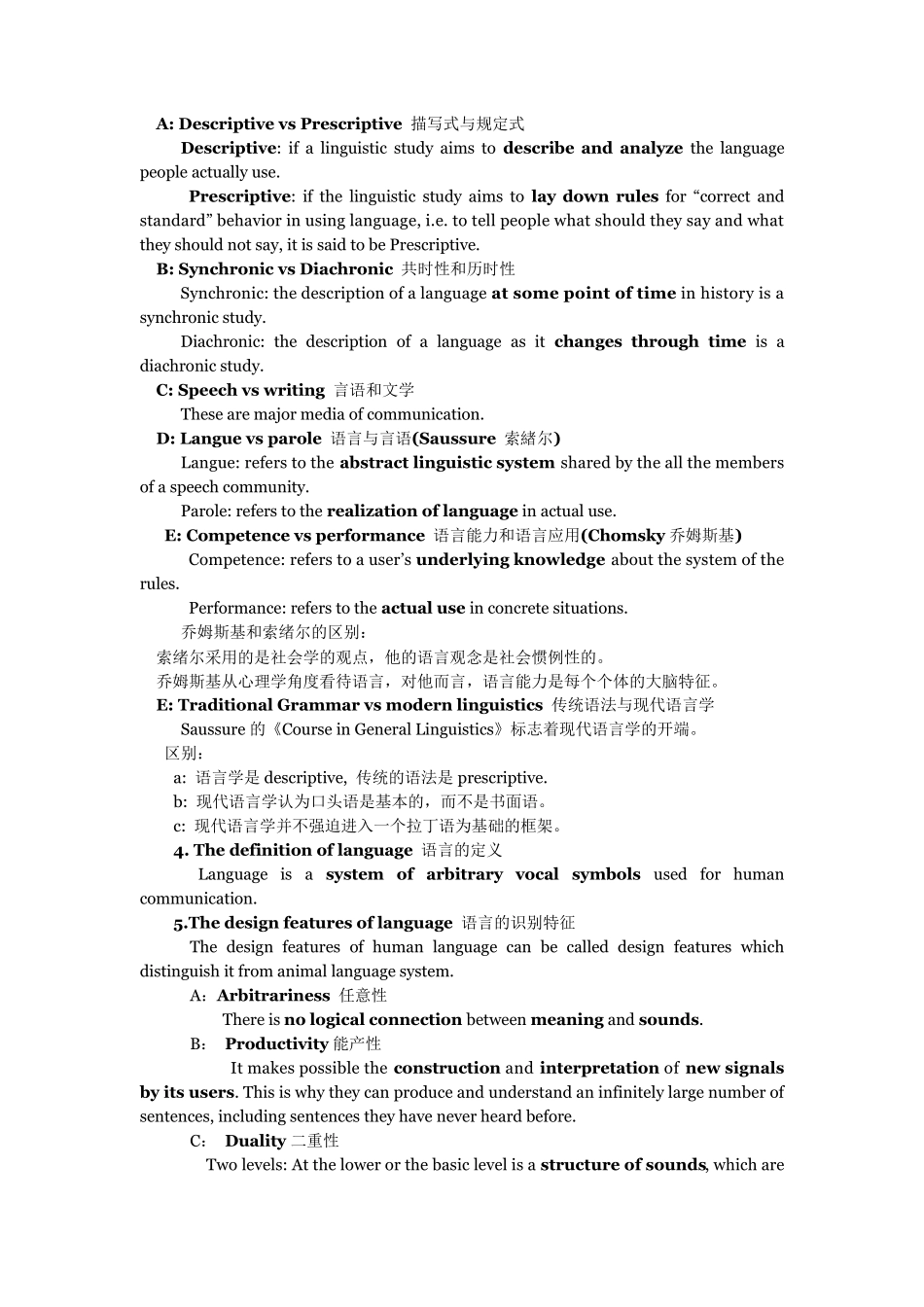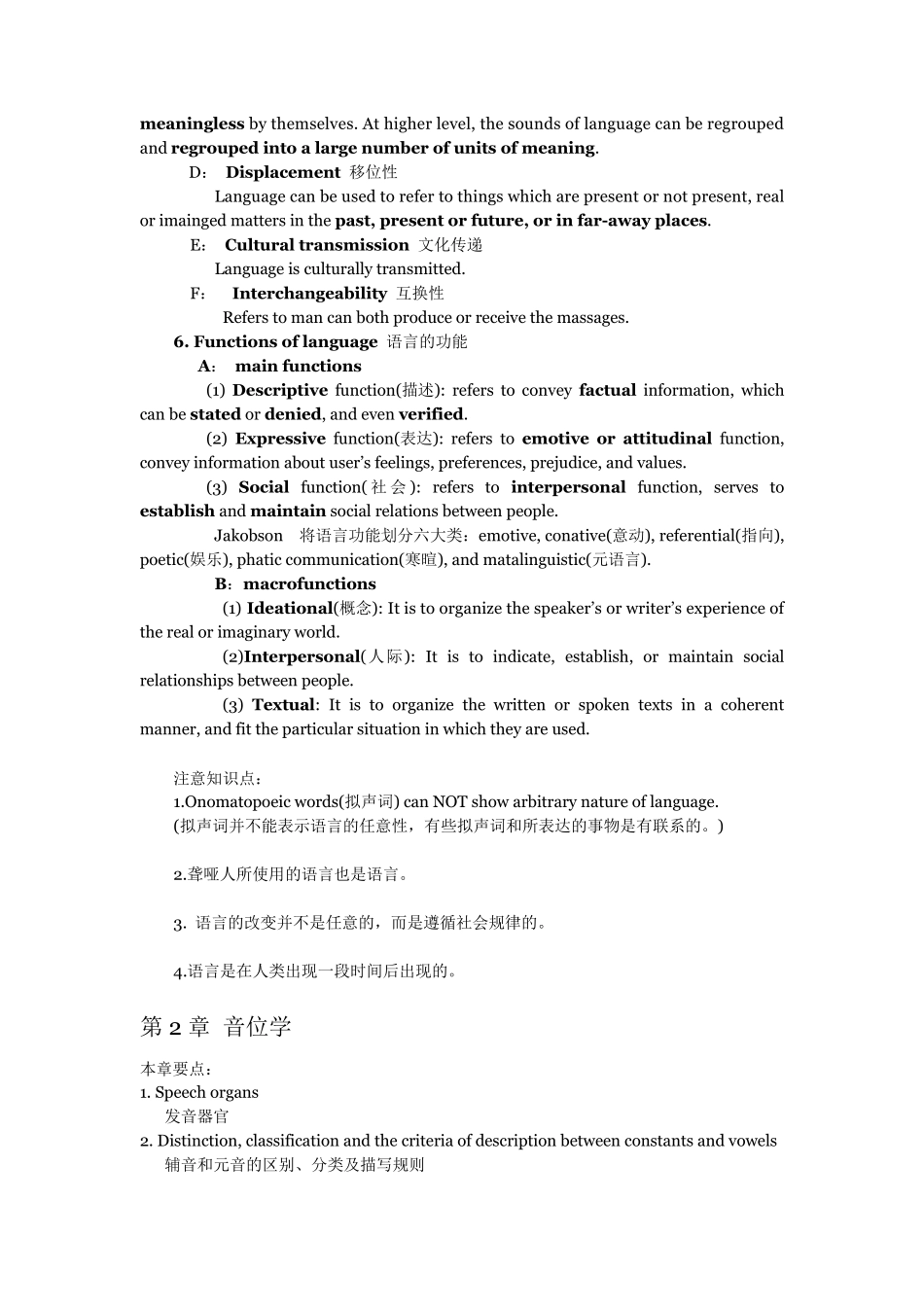新编简明英语语言学教程 戴伟栋版 第1 章 导言 本章要点: 1. The definition and main branches of linguistics study 语言学的定义和研究范围 2. Important distinction in Linguistic 语言学的一些重要区分 3. The definition and the design features of language 语言的定义和识别特征 4. Function of language 语言的功能 本章考点: 语言学考点: 语言学的定义,语言学中几组重要的区别,每组两个概念的含义、区分及其意义;普通语言学的主要分支及各自研究范畴;宏观语言及应用语言学的主要扥只及各自的研究范畴。 语言的考点: 语言的定义;语言的识别特征(任意性,能产性,二重性,移位性,文化传递性);语言的功能 1,The definition of linguistics 语言的定义: Linguistics is generally defined as the scientific study of language(based on the systematic investigation of linguistic data, conducted with reference to general theory of language structure) 2.The scope of linguistics 语言学的范围 A: micro-linguistics Phonetics(语音学): the study of the sounds used in linguistic communication. Phonology(音系学): the study of how sounds put together and used to convey meaning in communication.(语音分布和排列的规则及音节的形式) Morphology(形态学): the study of the way in which the symbols are arranged and combined to form words. Syntax(句法学): the study of rules in the combination of words to form grammatically permissible sentences in language. Semantics(语义学): the study of meaning. Pragmatics(语用学): the study of the meaning in the context of language use. B: macro-linguistics Sociolinguistics: the study of all social aspects of language and its relation with the society form the core of the branch. Psycholinguistics: the study of language and its relation with psychology. Applied linguistics: the study of application of language to the solution of practical problems. Narrowly it is the app...


